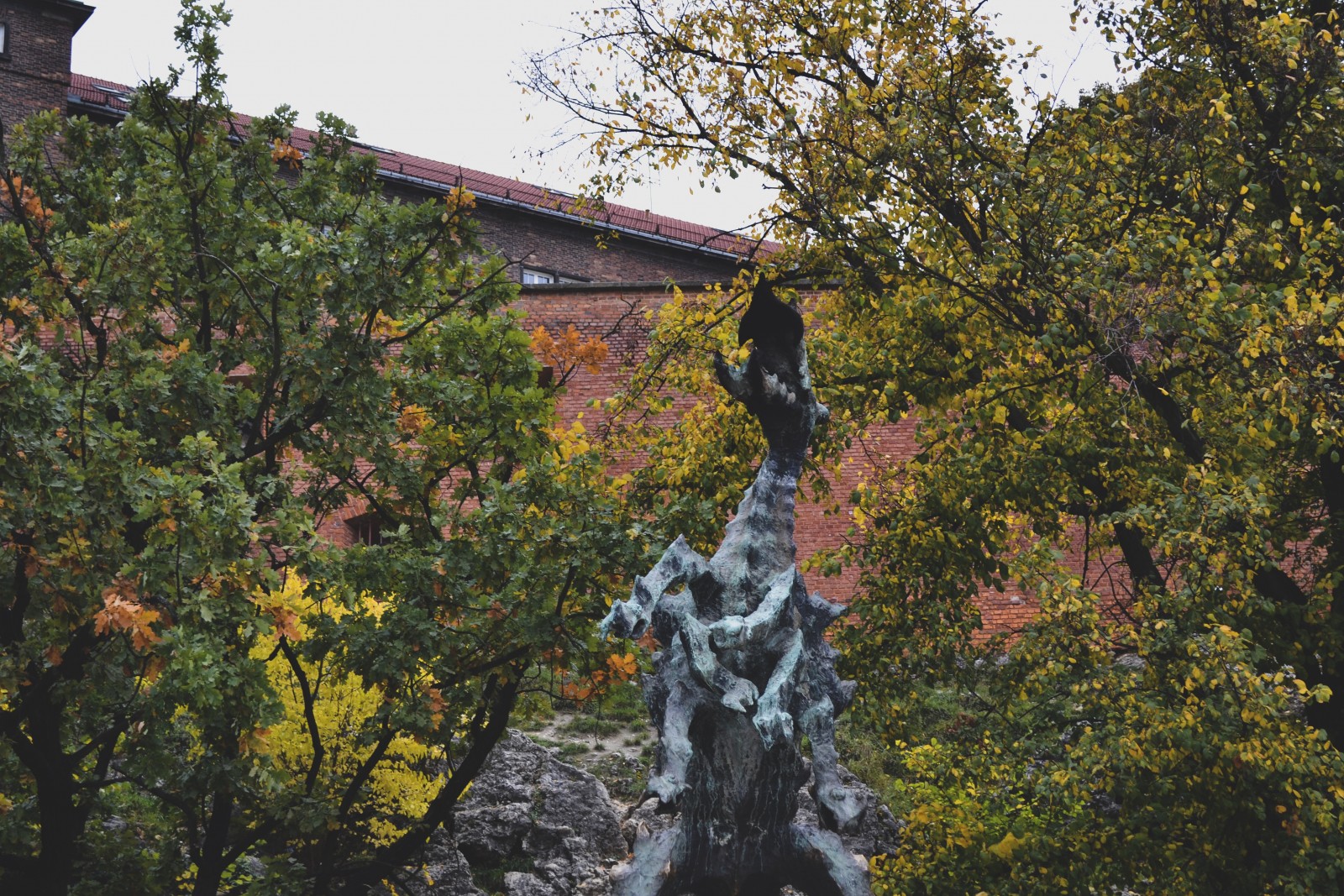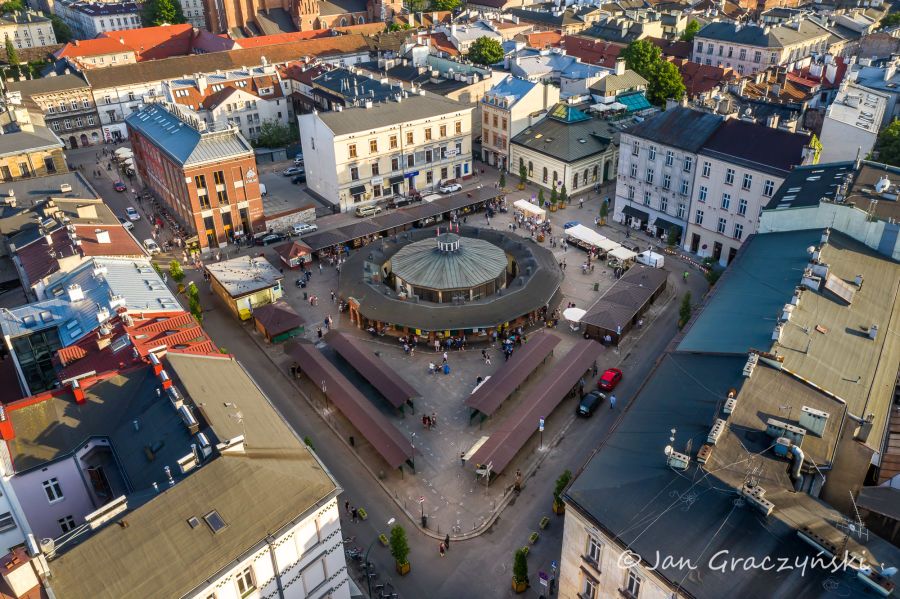Wawel Dragon Statue

Wawel Dragon Statue
Wawel Dragon Statue is a longtime symbol of Kraków. The six-metre monument, being a major tourist attraction of the city, is dedicated to a beast from popular local legends.
According to the oldest story, in the 12th-century Kraków there was a dragon who terrified the residents of the city for years. To avoid casualties, local people used to feed the dragon with their own cattle, which resulted in financial losses. Then Krakus, who was the king of Poland and founder of Kraków city, decided to disembarrass his people and ordered his two sons – Lech and Krakus II - to kill the monster. The young men, being aware of the predominance of the dragon, came up with a clever idea. At feeding time, they put in front of the dragon's lair a calf skin which was staffed with brimstone. The creature, unaware of the deceit, ate up the whole meal and immediately rushed to the nearest water point which was the Wisła River. Unable to quench thirst, the Wawel Dragon was drinking the water uncontrollably until it consumed half the river and its enormous stomach exploded. In this way the royal sons rescued inhabitants of Kraków from the cruel monster. In later versions of the legend, this brave feat is credited to a poor cobbler Skuba, who, as a reward, won the hand of king's daughter.
No matter which variant of this story is closer to the truth, the dragon located at the foot of Wawel Hill since 1972 is to remind us of these legendary events. The Dragon Statue, designed by the local artist Bronisław Chromy, breathes real fire every 10 minutes, which brings a smile on the faces of visitors. Contrary to popular belief, the creature has seven heads, not just one, that most of the people don't know about, assuming that the smaller heads are its limbs. Literally every tourist wants to take a souvenir photo with the Wawel beast!
The dragon motif is so popular that even the street leading towards the castle is called Smocza [Eng. Dragon Street] and every year on June there is the famous Great Dragons Parade taking place on the streets of Kraków. Having seen the statue, it is worth to visit also the Dragon's Lair, which is situated nearby on the bank of the Wisła River. The chamber, that used to be home to the dragon, is available for tourists from the second half of April until the end of October, from 10:00 to 19:00. You can purchase the tickets by the entrance for 5zł. Enjoy yourself! :)


